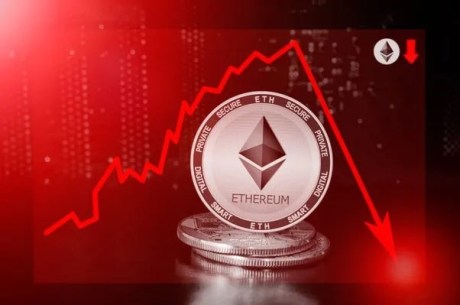A recent market report by research firm Kaiko noted how Grayscale’s Spot Ethereum ETF could have a negative impact on Ethereum’s (ETH) price. This is based on the firm’s expectations that Grayscale’s Ethereum Trust (ETHE) could follow a similar path to Grayscale’s Bitcoin Trust (GBTC).
Ethereum Could Face Significant Selling Pressure From Grayscale’s Outflows
Kaiko noted that Ethereum could face significant selling pressure from Grayscale’s ETHE once the Spot Ethereum ETFs begin trading. This is because the fund has been trading at a discount between 6% and 26% over the past three months, with a wave of profit-taking likely to concur. It is worth mentioning that Grayscale’s ETHE has previously operated as a closed-end fund, with Grayscale simply applying to convert it to an exchange-traded fund (ETF).
The research firm noted that Grayscale’s ETHE has over $11 billion in assets under management (AuM). That means that $110 million of daily average outflows could leave the fund if Grayscale’s Ethereum ETF sees a similar magnitude of outflows to Grayscale’s Bitcoin ETF, whose $6.5 billion outflows in the first month of trading amounted to 23% of the fund’s AuM.
Grayscale’s Bitcoin Trust (GBTC) also operated in a similar fashion before it was converted to an ETF. This is believed to have contributed to the $6.5 billion outflows the fund recorded in the first month of trading, with many investors taking profit since they purchased the fund at a discount. Therefore, Kaiko expects that something similar could happen with Grayscale’s ETHE.
The outflows that Grayscale’s Spot Bitcoin ETF is known to have exerted significant selling pressure on Bitcoin’s price, causing the flagship crypto to decline significantly. As such, the same thing can be expected with Ethereum’s price if Grayscale’s Spot Ethereum ETF suffers a similar fate.
However, besides investors taking profit from Grayscale’s Bitcoin ETF, Grayscale’s fund fee is believed to be another factor that sparked the significant outflows it recorded back then. For context, Grayscale’s fee was the highest among all the Bitcoin ETF issuers. As such, the potential outflows from Grayscale’s Ethereum ETF could be minimally reduced if the asset manager makes it fee competitive this time around.
Ethereum’s Future Trajectory Still Bullish
Kaiko suggested that Ethereum is still bound to make significant price gains once other Ethereum Spot ETFs begin to record impressive inflows that can overshadow the outflows from Grayscale’s ETHE. Something similar happened with Bitcoin, as Kaiko noted that Grayscale GBTC’s outflows were offset and surpassed by inflows from other Bitcoin ETFs by the end of January.
Thanks to the impressive demand that these Bitcoin ETFs recorded, the flagship crypto hit a new all-time high (ATH) in March earlier this year. The Ethereum ETFs could also trigger such a rally for ETH’s price depending on the amount of inflows these funds record once they begin trading.
Meanwhile, Kaiko noted that even if the inflows disappoint in the short term, the mere approval of these funds already has “important implications for ETH as an asset” since it confirms that it isn’t a security. This has helped remove the regulatory uncertainty that has weighed on Ethereum’s price for some time now.





